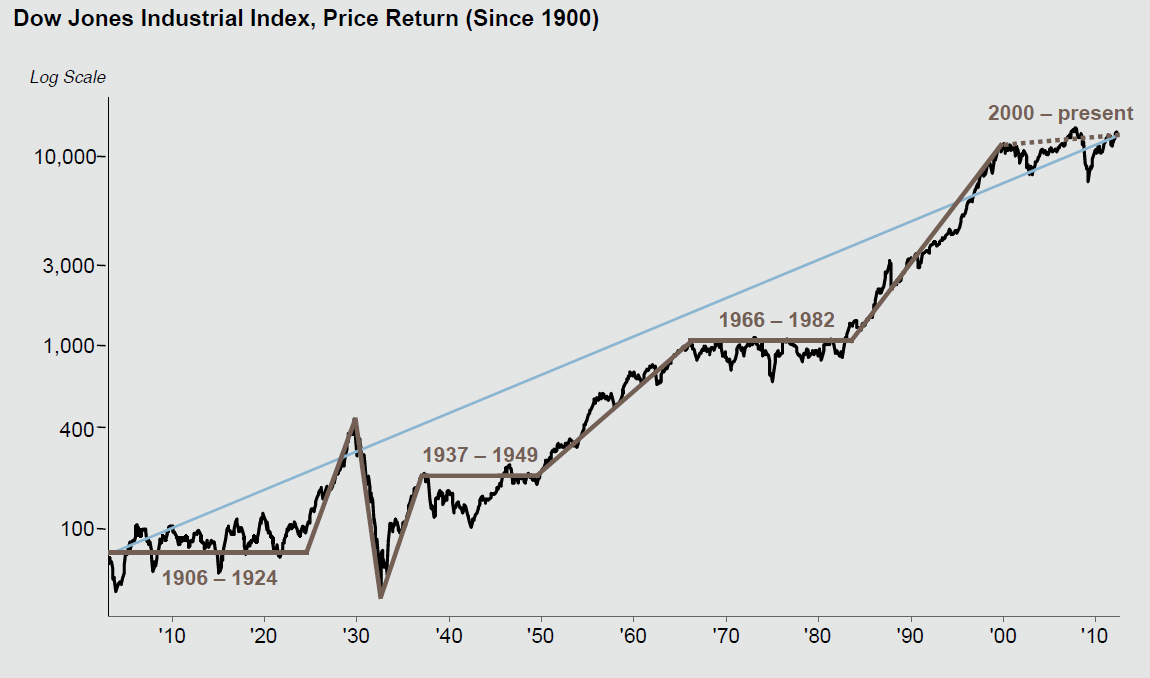
The 2008 downturn was often being compared to the Great Depression. After all, if our grandfathers had the right to witness an intense depression, why should we be stripped of the same right? However, the cold hard data paint a very different story than the professionally overhyping modern media (and not only media) loved to suggest.
If you bought the stocks weighted as the Dow Jones index when they peaked on a day in 1929, you lost a lot of money. In fact, you only got to your original investment in the late 1950s, more than 25 years later.
I have already written the analogous statement about the recent era. If you bought the Dow Jones stocks at the peak in October 2007, which means that you were about as unlucky as your humble correspondent, you returned to your original wealth less than 4.5 years later (I didn't because the non-U.S. stocks haven't returned to their highs yet, but it's still nothing of the Armageddon proportions). The recovery was therefore more than 5 times faster, in a certain counting.
(The Standard & Poor's 500 index is about 1% below the all-time high set on the same day in 2007 as DJIA.)
Of course, one should debate whether it really means that the situation in the recent era was less serious or whether the faster recovery is actually such a good thing. I think it's obvious that the central banks and governments have pumped lots of money to the system in recent years. Some dynamics that was mysterious 70 years ago may be understood today.
On the other hand, various assorted interventions by governments and central banks often distort (and have actually distorted) the market, lower (and have actually lowered) the long-term economic growth, and pose the risk (and may actually be going to pose the risk) of a Super-Great-Depression Collapse sometime in the future.
The public debt – and sometimes even the consumers' debt – is what is rather threatening. No doubts about it, people have learned to manipulate with the debt more rationally than they could in the 1920s or 1930s. Traders and perhaps other relevant people know how to quantify the degree of risk and they are routinely working with lots of handy financial products that may help them with various problems that the changes in the markets may create for them. However, lots of moral hazard has been inserted into the system, too. Many people – and institutions – just don't care and don't need to care about the risk because they know (or "almost" know) that they will be bailed out or otherwise helped.
The Dow Jones Industrial Index of 2013 surely incorporates companies that are technologically superior, that have learned lots of things – not only about science and technology but also about the social interactions, efficient marketing, and many other things – that their predecessors 80 years ago could only dream about. However, if I try to subtract all this "technological" progress of all these kinds, a question about the "intrinsically moral" properties of the contemporary society and the old society remains. What I mean is the people's, companies', and governments' responsibility, their perceived need to work well instead of the right to rely on someone else, the sustainability of the overall debt, and so on. In this comparison, I am not sure whether there has been positive progress in the 1930s.
What do you think?
0 comments:
Post a Comment